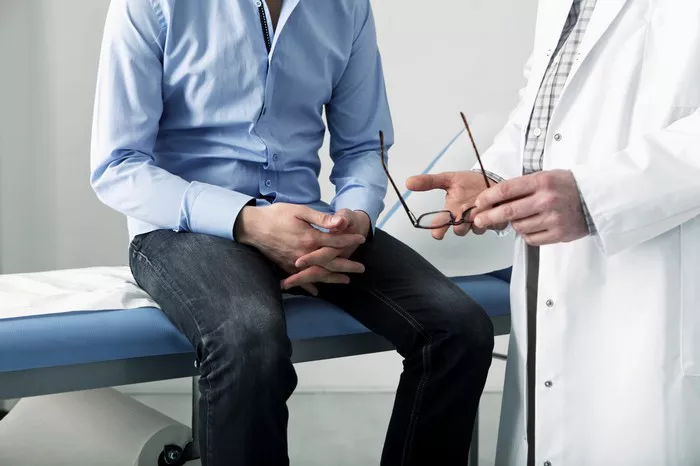Varicocele is a condition that affects many men, typically during their teenage or young adult years. It occurs when the veins in the scrotum become enlarged, similar to varicose veins in the legs. These swollen veins are often found on the left side of the scrotum, though they can occur on the right side as well. The condition is usually painless but can cause discomfort, especially when there is a noticeable lump in the scrotum. Understanding how a varicocele lump feels can help you identify the condition and seek appropriate medical attention.
This article will guide you through the details of what a varicocele lump feels like, its physical characteristics, and how it differs from other conditions. You will also learn about the potential symptoms and when to consult a healthcare provider.
What Is a Varicocele Lump?
Before understanding how a varicocele lump feels, it’s important to know what it is. A varicocele lump refers to the swollen veins in the scrotum caused by the condition known as varicocele. The veins in the scrotum, known as the pampiniform plexus, are responsible for carrying blood away from the testicles. When these veins become dilated or enlarged, they can form a lump or mass inside the scrotum.
Varicoceles are often described as feeling like a bag of worms due to the texture of the swollen veins. This sensation comes from the veins being enlarged and palpable under the skin, giving the lump a distinct feel. Though the lump may be soft or squishy to the touch, the exact characteristics can vary depending on the severity of the condition.
How Does a Varicocele Lump Feel?
Soft and Squishy Texture
The first thing to note when describing the feeling of a varicocele lump is its softness. The lump is usually not firm or hard like a solid mass but instead has a soft, squishy texture. This is because the lump consists of enlarged veins that feel like a bundle of worms under the skin. When touched, you may feel the veins moving slightly under your fingers.
The texture can be compared to the feeling of a soft, flexible rope or a bag of soft marbles. The veins are not as firm as a tumor or cyst, which means the lump does not feel solid. Instead, it may feel like a collection of smaller, soft veins that are swollen and engorged with blood.
Size and Shape of the Lump
Varicocele lumps vary in size and shape depending on the severity of the condition. In some cases, the lump may be small and only noticeable when you are lying down. In other cases, the lump may be larger, especially if the varicocele is more advanced. When larger, the lump can be more visible, and you may notice an increase in scrotal size.
The shape of the lump is typically irregular because it consists of multiple dilated veins. The swelling can cause the scrotum to appear uneven, with one side feeling fuller or heavier than the other. The lump may not be perfectly round but will have an uneven, lumpy appearance when palpated. It is important to note that varicoceles generally develop on the left side of the scrotum, although they can sometimes occur on the right side or affect both sides.
Location and Tenderness
The lump caused by a varicocele is usually located above the testicle, along the spermatic cord. This is the cord-like structure that connects the testicle to the rest of the body. While the lump is most commonly found on the left side, it is possible to have a varicocele on the right or both sides, although the right-sided varicocele is less common.
In some cases, the lump may be tender or painful to the touch, especially if the varicocele becomes more swollen or if there is a presence of associated symptoms like discomfort or heaviness in the scrotum. However, not all varicoceles cause pain, and some men may not experience any discomfort even if they have a lump.
Associated Symptoms of Varicocele
Pain or Discomfort
While the lump itself may not always be painful, varicoceles can lead to discomfort in the scrotum or lower abdomen. The pain tends to worsen throughout the day, especially if you have been standing for long periods or engaging in activities that increase pressure on the veins. The discomfort is often described as a dull ache or a feeling of heaviness in the scrotum.
In some cases, the pain can be sharp or throbbing, particularly when engaging in activities that put additional strain on the scrotum, such as exercise or sexual activity. The discomfort may subside after resting or lying down.
Heaviness or Fullness in the Scrotum
Another symptom that can accompany a varicocele lump is a sensation of heaviness or fullness in the scrotum. This sensation is caused by the increased blood flow in the enlarged veins, leading to a feeling of fullness that may make it uncomfortable to walk or perform physical activities.
The heaviness may be more pronounced after prolonged periods of standing or after physical exertion. In some cases, the discomfort can be significant enough to interfere with daily activities, although many men report that it becomes less noticeable after lying down or resting.
Visible Swelling
While the varicocele lump itself may not always be visible, it can cause visible swelling in the scrotum, especially when the veins are significantly enlarged. The swollen veins may cause one side of the scrotum to appear larger than the other. This asymmetry is often more noticeable when the individual is standing or performing activities that increase pressure in the scrotal area.
In severe cases, the scrotum may appear much larger than usual, and the lump may become more pronounced. However, most varicoceles are not this severe and may only cause mild swelling or enlargement.
When Should You Seek Medical Attention?
Persistent Pain or Swelling
While varicoceles often do not cause significant discomfort, you should seek medical attention if you experience persistent pain or significant swelling in the scrotum. If the lump becomes larger, more painful, or is accompanied by changes in the appearance of the scrotum, it may be a sign of a more severe condition that requires treatment.
Fertility Concerns
Varicocele lumps can sometimes lead to fertility issues, as the enlarged veins can raise the temperature of the testicles, affecting sperm production. If you are experiencing difficulty with conception or have concerns about fertility, it is important to consult a healthcare provider for an evaluation.
A doctor can assess the size of the varicocele and determine if it is causing any fertility issues. In some cases, surgery may be recommended to remove or repair the varicocele and improve sperm quality.
Conclusion
A varicocele lump typically feels soft, squishy, and irregular in shape due to the enlarged veins in the scrotum. While it is often painless, some individuals may experience discomfort, swelling, or a feeling of heaviness in the affected area. If you notice a lump in your scrotum or experience symptoms such as pain, swelling, or fertility concerns, it is important to seek medical attention for a proper diagnosis and treatment plan. Early detection and intervention can help prevent complications and improve overall well-being.
Related topics:
When Varicocele Surgery is Necessary





















